Medium Format Lenses with
the Pentacon Six Mount
A comparative test
by TRA
Further 1000mm lens tests
Part 2
The Test Results
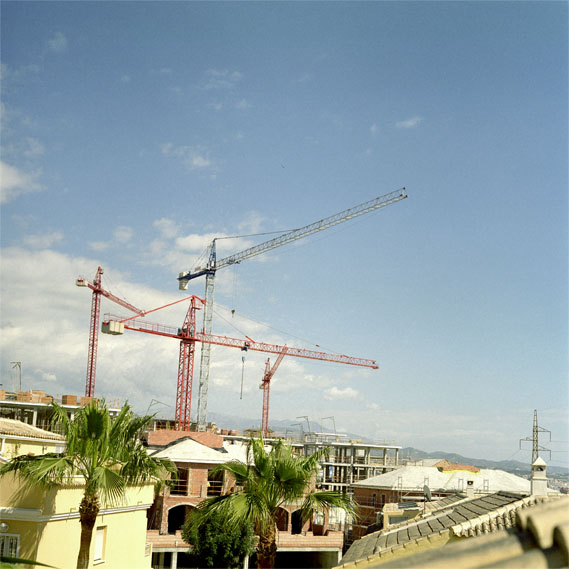
[C427-7] View chosen for the 500mm – 1000mm tests
A reminder of the coverage given with the 80mm standard lens.
Compare it with the area covered below at 1000-1200mm!
1980s Biometar f/2.8 80mm at f/9.5 1/500
Fuji NPC 160
Presentation
We will divide the presentation of the test results into three groups
of lenses:
-
The 1000mm Carl Zeiss Spiegelobjektiv
-
The two standard 500mm lenses with a 2× converter
-
The three 500-600mm mirror lenses with a 2× converter
To reduce loading times, I will put each group on a separate page.
For more information on my approach to analysing coverage, resolution
and colour fringeing, refer back to the introduction to the 500mm-600mm
tests,
here.
Carl Zeiss Jena 1000mm Spiegelobjektiv
“Spiegelobjektiv” is just the German for “Mirror Lens”.
Designing and producing a 1000mm mirror lens with a maximum aperture
of f/5.6 was a triumph and was just what was needed for the slow emulsions
of the 1950s. Nowadays in most circumstances an f/8 lens would be
more than adequate, especially as mirror lenses cannot be stopped down.
The depth of field at f/5.6 with a lens of this focal length is tiny,
and in this series of tests, in which one crane is located behind another,
it was impossible to get both cranes in focus at f/5.6. The split-image
rangefinder wedges in the Rollei screen (or on any other camera and screen)
are not designed for such long focal lengths, and one half usually blacks
out, although by moving the eye round the viewfinder it is occasionally
possible to get both halves visible at the same time for long enough to
adjust the focus. I took this shot twice, and thought that my focussing
was the same each time, though the results show that once I focussed on
the nearer crane and the other time on the farther one.
| Focussing with this lens is achieved by rotating this wheel, which
moves the camera in and out on the bellows that are an integral part of
the lens.
As can be seen in this shot, closest focus is 16 meters or a fraction
under 50 feet. |
|
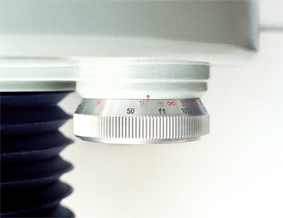
[C428-18A]
|
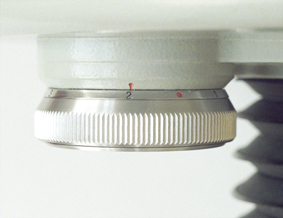
[C428-19A]
|
|
The wheel on the other side of the lens back plate swings into the
light path any one of the six filters that are built into the lens. |
Just getting this massive lens on a tripod and pointing at the subject
without the help of a burly assistant is quite an achievement, I feel,
so I consider that these results are not bad. I definitely need a
much sturdier tripod for this lens.
NEW February 2008: To read a report on a sturdier tripod for
this lens, click here.
| An idea of the size of this lens can be gathered by seeing the Praktica
VLC 35mm on the front lens cap. |
|
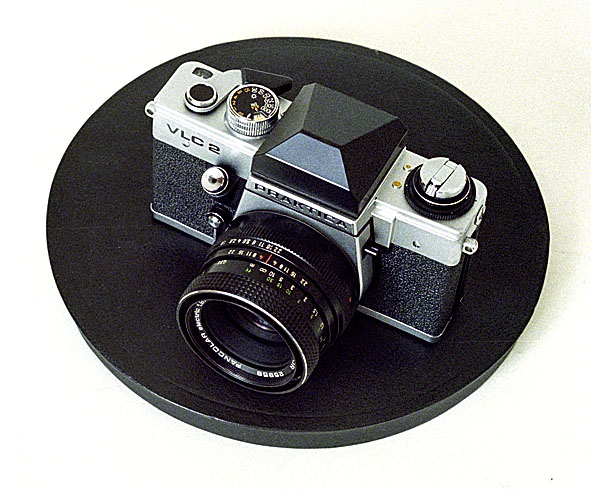
[C428-20A]
|
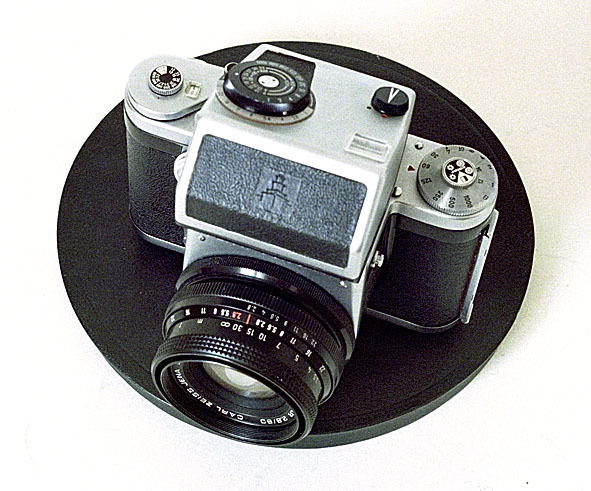
[C428-21A]
|
|
Even with the Pentacon Six on the 1000mm lens front cap there is space
all around the camera body, so large is the diameter of the lens. |
Coverage
Results were exactly as we have seen with other tests, with slight
darkening in the top corners and along the bottom edge, although probably
hardly extending into the area that would be seen in most prints or mounted
slides. Remember that in these tests I am showing you virtually
the whole of the negative – far more than is seen in prints
or slides, as the enlarger mask or slide mount covers the edges of the
frame.
1000mm Spiegelobjektiv
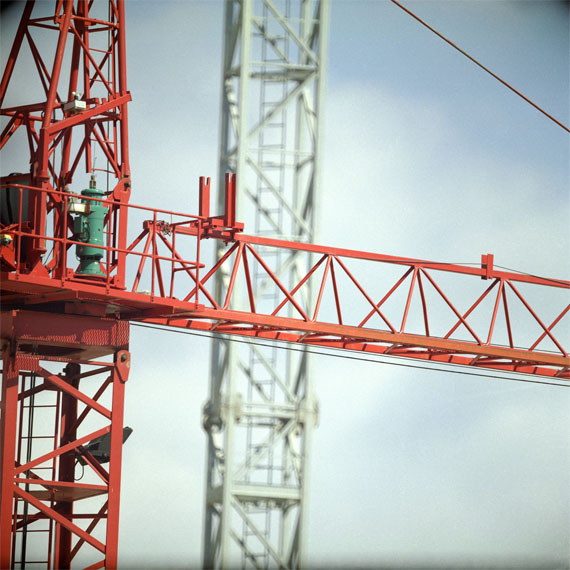
[C427-6]
Carl Zeiss Jena 1000mm f/5.6 Spiegelobjektiv 1/500
|
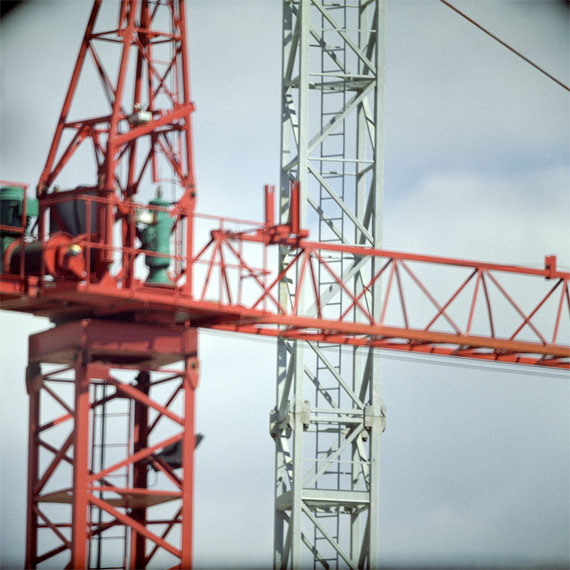
[C427-9]
Carl Zeiss Jena 1000mm f/5.6 Spiegelobjektiv 1/1000 (re-metered)
|
Fuji NPC 160
The extremely shallow depth of field is obvious from these shots.
Remember that most (nearly all) of the darker area at the bottom of the
image would be masked off in an enlarger or slide mount and so would not
be seen on the print or the screen.
Resolution
When the image is correctly focussed, the resolution with this lens
is again shown to be outstanding. One can see the most incredible
details – small patches of rust on the ironwork, for instance.
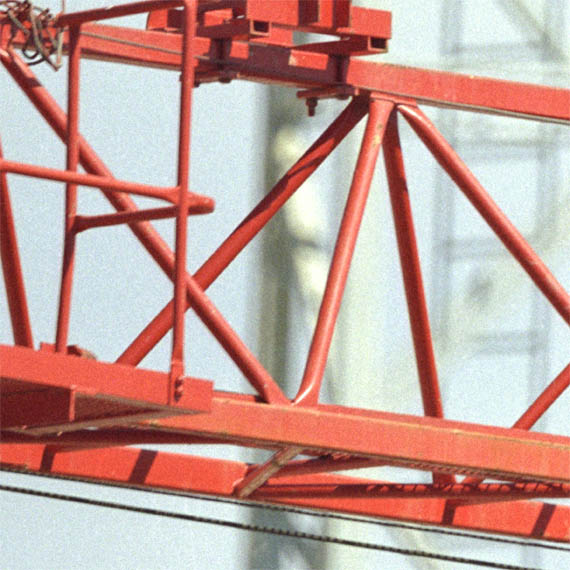
[C427-6r]
Carl Zeiss Jena 1000mm f/5.6 Spiegelobjektiv 1/500
|
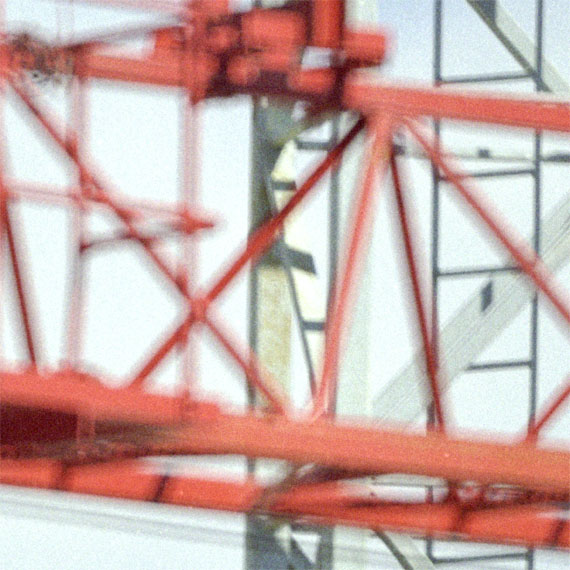
[C427-9r]
Carl Zeiss Jena 1000mm f/5.6 Spiegelobjektiv 1/1000 (re-metered)
|
It’s a pity there isn’t a man sitting on that crane, reading a newspaper,
because if there were, I’m sure that on a decent enlargement you would
be able to read it with him – always assuming that you got the focus spot-on!
Colour Fringeing
There is a total absence of colour fringeing with this lens, as is
to be expected with mirror lenses. The result is superb.
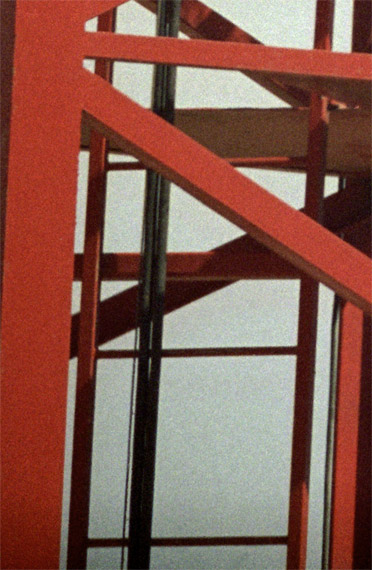
[C427-6cf]
Carl Zeiss Jena 1000mm f/5.6 Spiegelobjektiv 1/500
From bottom left-hand corner of image.
|
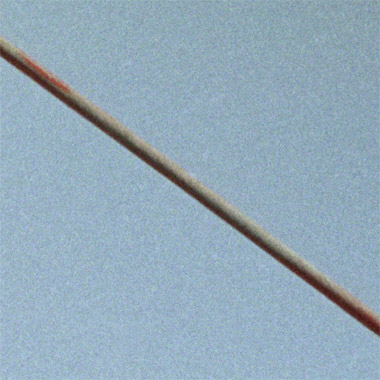
[C427-6cf2]
Carl Zeiss Jena 1000mm f/5.6 Spiegelobjektiv 1/500
From near the top right-hand corner, just in from the corner
itself.
|
I have been asked how this lens performs with a 2× converter.
See the results of my tests here.
To go on to the next section, click below.
Further tests of 1000mm & 1200mm lenses,
Part 3
To go back to the beginning of the lens tests, click below and then
choose the focal length that you want to read about.
Back to beginning of lens tests
Home
© TRA November 2007, November 2008










